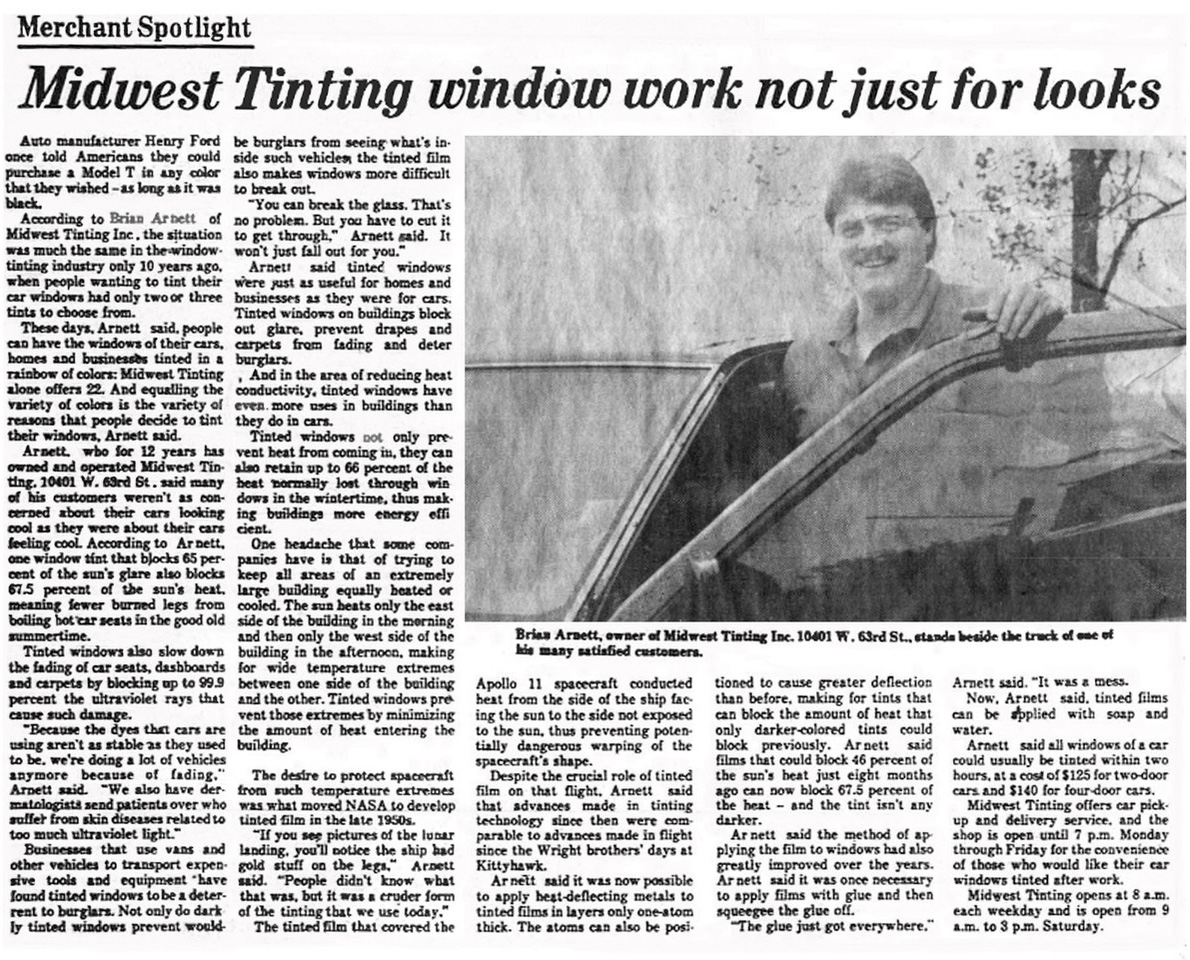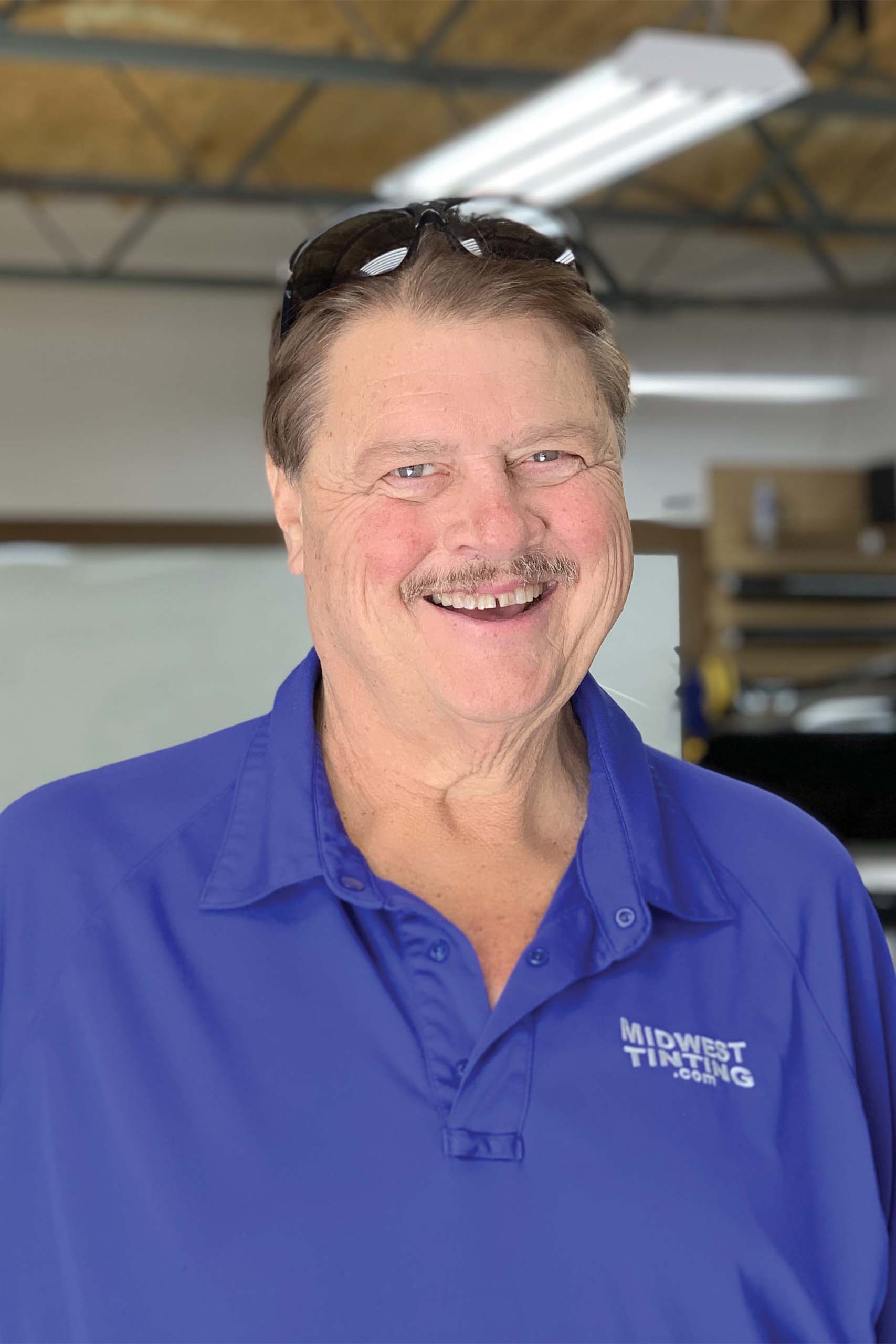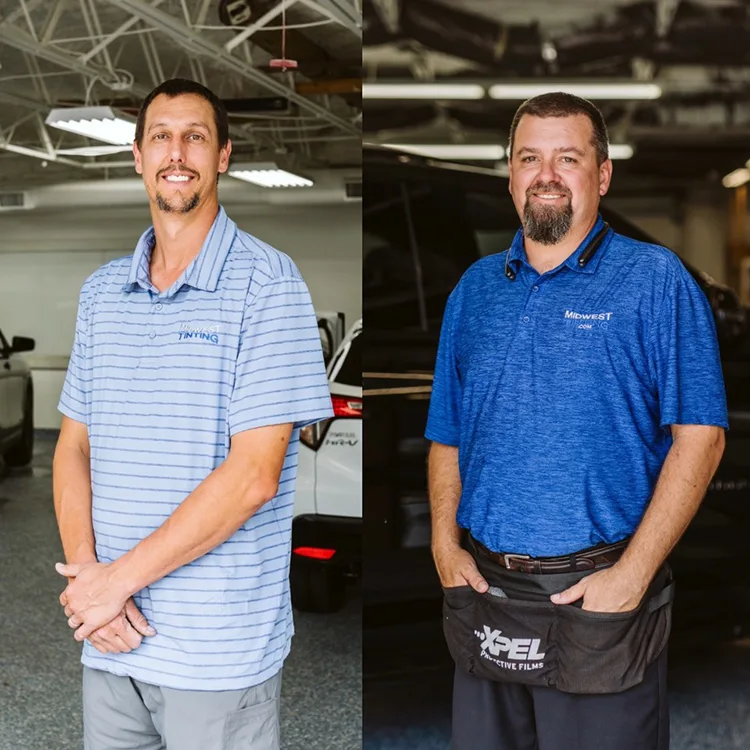Surgical Precision
If you had told a young emergency medical technician (EMT) in the 1970s that he’d one day build a tinting empire spanning three locations and employing more than 40 people, he might have looked at you like you’d lost your mind. But that’s exactly what happened to brian Arnett, founder and president of Midwest Tinting LLC in Overland Park, Kansas.
Arnett’s journey into the window film industry began not in a boardroom or trade school, but in the back of an ambulance as an EMT. “One day, 1 picked up a guy who was burned in an automobile accident on the interstate,” he recalls. “I was taking care of his burns and asked what he did for work, and he said, ‘install solar film on buildings.’ Naturally, I was intrigued.”
That brief, unexpected encounter set the stage for what would become a 50-year journey. With just $1,200 in his pocket and a whole lot of curiosity, Amett took the leap and never looked back.
Pioneering Without a Playbook
Starting Midwest Tinting in the 1970s meant entering a virtually tool-less, resource-starved industry. There were no color options- just reflective silver—and installers had to mix adhesive with water to even get the film to stick. The material itself lacked the hard coating that’s now standard. which meant one swipe with a squeegee could ruin it.
“There were no tools,” Arnett says. “I went to places that were doing photo developing and found that they had some tools that I could modify.” He even crafted his own film handler from a hardware store and perched it on top of a six-foot ladder.
That can-do spirit came naturally. “The ability to solve problems on my own came from my farming background,” he adds. “You had to find a solution when there wasn’t one.” But the toughest challenge wasn’t the lack of equipment—it was public perception. During the 1970s energy crisis, educating people on the benefits of solar film became a mission.” Showing the public that this product worked and could stop a great deal of heat was important,” he says.
From Scalpel Skills to Seamless Growth
The real turning point came in the 1980s, when Arnett developed a surgical method—literally—to make tint jobs look cleaner. “I developed a way to cut the defroster lines with a surgical scalpel and perfected the technique,” he explains. At the time, local competitors were delivering sloppy, seamed installations on back windows. Amnett’s seamless approach stood out, and demand soared.” Everyone wanted to have no seams in the back glass, so I became very busy and needed help,” he says. That led to hiring and training his own team-teaching them to do things his way. His shop became known for high standards and a commitment to craftsmanship. “Bad tint went on the floor and never left the shop,” he adds.
From that garage, Midwest Tinting steadily expanded across the Kansas City area, all grounded in Arnett’s attention to detail and passion for doing the job right.

Technological innovations played a major role in Midwest Tinting’s continued growth. “When the material was eventually coated with adhesive and hard-coated, it made it easier to handle,” Arnett notes. Add in the multilayer and sputter films, and suddenly the market opened up in a big way. Lifetime warranties didn’t hurt, either. “That greatly helped to open the markets,” he says.
A Legacy in the Making
With almost five decades in the rear-view mirror, Arnett is now planning for the next phase-by giving back to the team that helped build the company:
“I have decided to leave the company to the employees,” he says. Long-term team members, Caleb Silkett and Ron Talley, have already come on as equal partners, and when the time comes, the remaining third of the company will be available for other employees to acquire as stockholders.
“It will remain locally and privately owned and operated,“ Arnett says with pride. “The sky is the limit for what MWT can do in the future.”


Teamwork has always been at the core of Midwest Tinting’s success. Arnett praises his management staff—many of whom have over 15 to 20 years of experience. “I look upon our people as our most valuable asset,” he says. “We also compete at the national level to ensure that we are always on the cutting edge and using the best tools, techniques, and products possible.”
So what does a pioneering entrepreneur do when he’s not transforming glass or mentoring installers? “I like boating and fishing to relax and have fun,” Arnett says with a smile. After decades of hustle, he’s earned a little time on the water.
View the original article in Window Film Magazine: pages 10-12